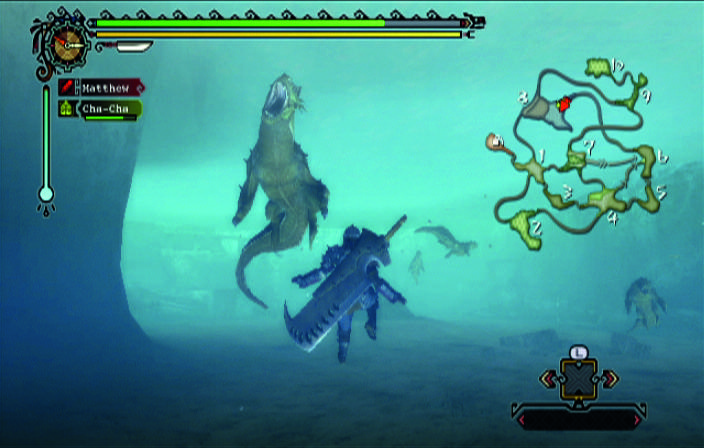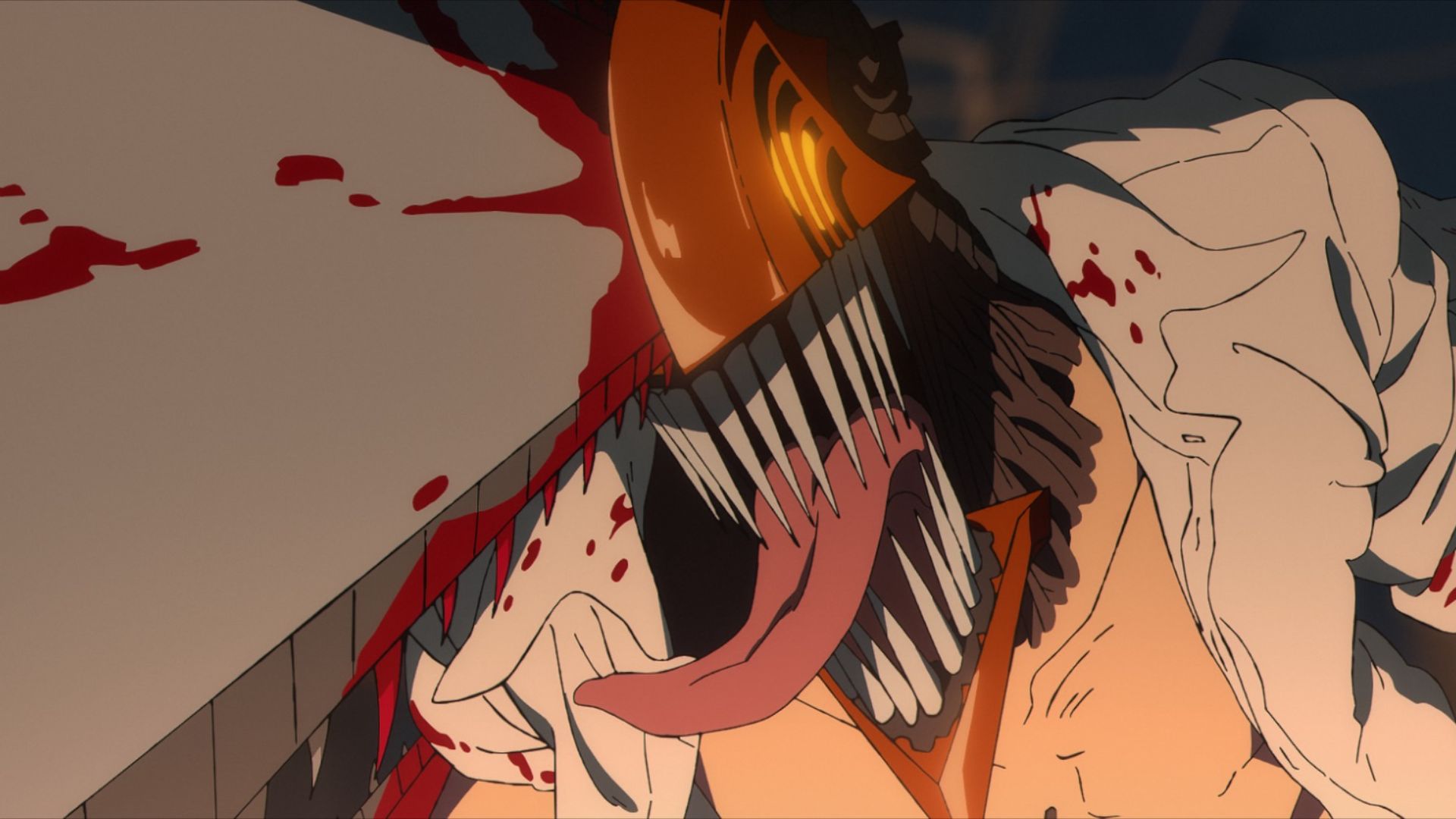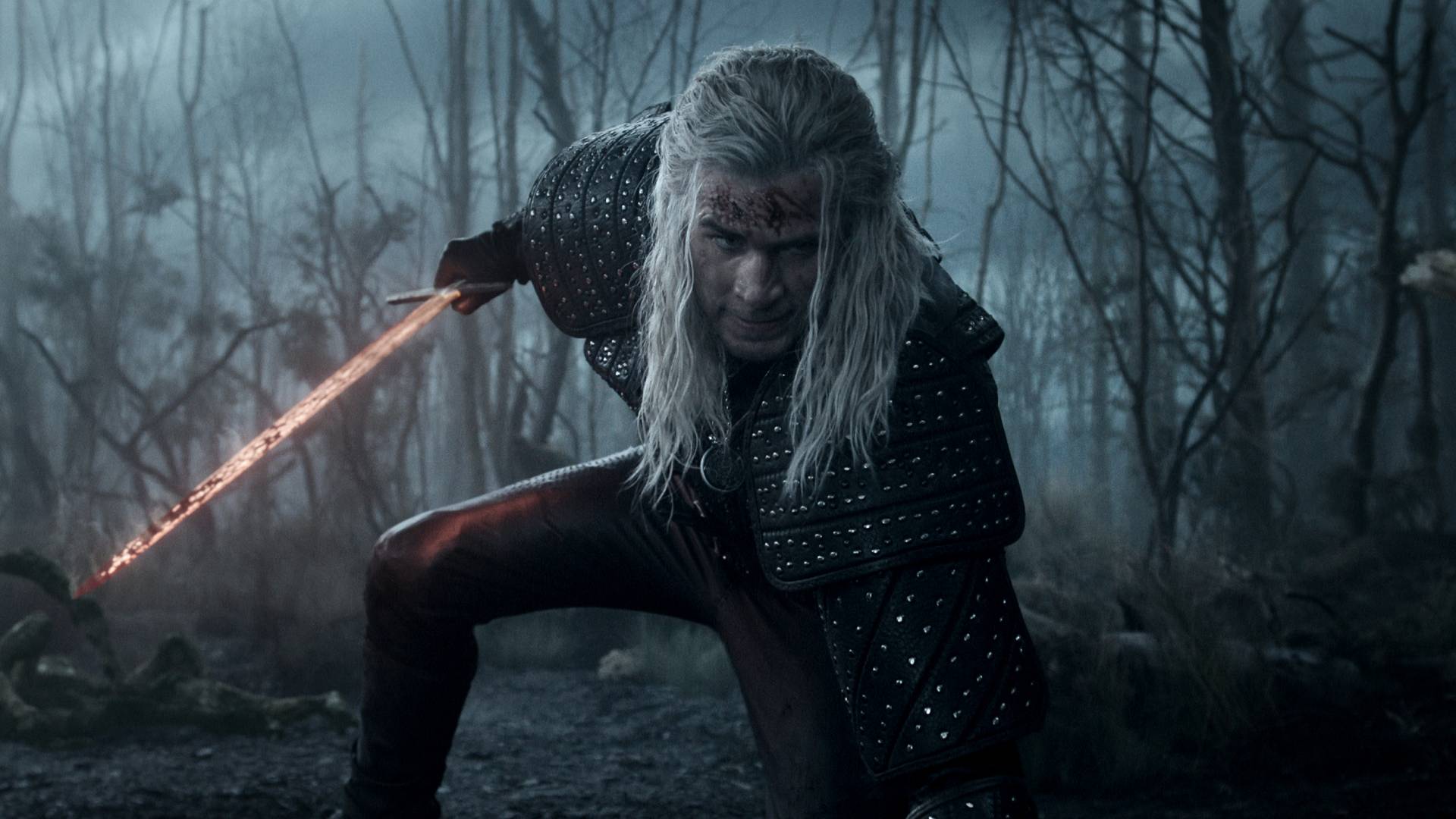Why you can trust GamesRadar+
Capcom’s smartest trick is an early tease of their biggest beast – underwater lightning dragon Lagiacrus. The game’s cover star, he’s the beast terrorising poor Moga Village. One early quest involves gutting Nessie-like Epioths. Dumb, they’re basically floating meat clumps. Doesn’t Lagiacrus know it. Arriving mid-harvest, he/she/it’s an incredible creation: 20 metres of snaking grace, tipped with an electricity-spewing maw. The music darkens – let’s call it ‘Oh No You’re Going to Be Eaten in E-Flat Major’ – and you swim for your life. Tantalisingly laying out the endgame, the hunt begins.
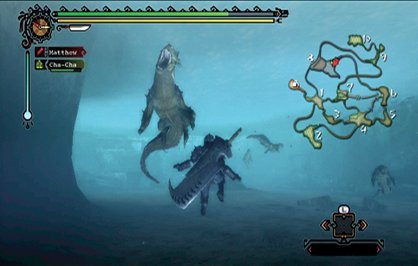
Fundamentally, Monster Hunter is about hunting and gathering. Which is more important is a subject of some debate. Do you hunt to secure the gristly ingredients needed to craft weapons or do you craft weapons to better the hunt? Eking out every last item massages the ‘gotta catch ’em all’ gland, but what good is a rare golem blade if you can’t thunk it through Ludroth skull? The cycle echoes Rune Factory. There’s more monsters and less wheat, sure, but the focus on bettering tools to improve time in the field and vice versa is the same. As in Rune Factory: Frontier, once Tri has you in its Escher-like staircase of upgrading, it’s hard to find the exit.
The same could be said of Tri’s PS2 and PSP predecessors. Capcom are cannier at easing Wii audiences in. Don’t get us wrong, this is every bit the monster experience that consumes hundreds of hours per player – it just understands that not every gamer lives in Japan, where PSP Monster Hunter is surgically inserted into the womb. Seasoned hunters may recognise the quests – collect X, kill X, catch X – but they won’t recognise new story trappings. Earthquakes have disrupted Moga Village, conveniently leaving citizens – the blacksmith, chef, farmer – with problems. Helping them introduces new ideas in a more organic fashion than any previous Monster Hunter title.
Moga Island itself is a radical departure for the series: a free-roaming area. Previously, the only way out of village hubs was in timed quests. Tri lets you gambol free, getting to grips with Capcom’s quirky mechanics. You’re free to gather herbs, mine, explore dark caves (with a gorgeous flickering flame in hand), fish, swim and bag your first Wyvern. Monsters slain in free time become resources for village upgrades. Farm development is particularly useful – growing herbs and mushrooms cuts down on scrabbling in the dirt. And listen to the villagers – they’re full of tactics and secrets.
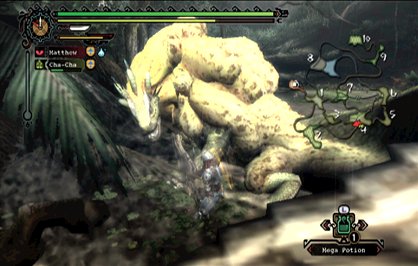
The opening five or so hours put such a welcoming face on this traditionally terrifying franchise you’d swear Nintendo had a hand in making it. They didn’t (although Capcom worked with them on the Classic Controller Pro design) so it’s testament to Capcom that they’ve thrown the doors wide open. Tri has a very ‘Capcomy’ feel. Localisation is Phoenix Wright worthy, full of anachronistic meme-talk and goofiness. Elsewhere we get a pig to dress up and cuddle (creepy), a jaunty barbecuing game (tasty) and silly hero animations (funny). And it’s worth legging it from Wyverns just to witness the ‘panic flee’ animation.
If Tri’s details amuse, the general artistic sweep is grand and beautiful. We’re not so sure of the ‘living ecosystem’ promise – it doesn’t go beyond ‘this monster hates that monster’ or ‘that monster calls in those minions’ – but they certainly look alive. Moga Island’s clifftop vista is an amazing sight. The orchestra even swells to make sure you get the point. We call this tune ‘Oh Wow, Would You Look at Those Mountains in A Minor’. Hey, toot away orchestra, you deserve it. From mountainous heights to baked desert soil, Monster Hunter could be subtitled Ten Places to See Before You Get Eaten.
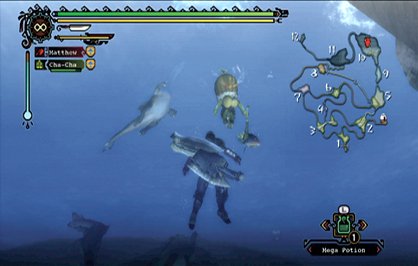
Special mention goes to the watery environs. While Capcom’s briny gloom is lovely, the magic is in the monster movement. The way beasts snake and tread water is spot-on. Sighting a coiled Lagiacrus watching a pack of frolicking Epioths sent shivers down our spine. This is a menacing place. Another special mention, then, for excellent swimming controls. Aiming the camera with the right analogue stick and moving forwards with the left really gives the maneuverability needed for intense underwater clashes. The Classic Controller Pro is essential for enjoying Tri.
Weekly digests, tales from the communities you love, and more
In a group of four, awkward weapon and item quirks come hurtling into perspective. Play alone and trap laying is often interrupted by a shunt. Online, one player buries the trap while the others draw attention away. Healing bullets finally make sense, with crafty bowgunners sniping you better from afar (or, in our case, missing and healing the Barroth instead). If a player with concussive skills staggers the Wyvern, those with slower wind-up times can hop in and deliver the payload. Imagine all the beautiful solo tactics, four times over, helping and hindering one another. Our palms are sweating again.
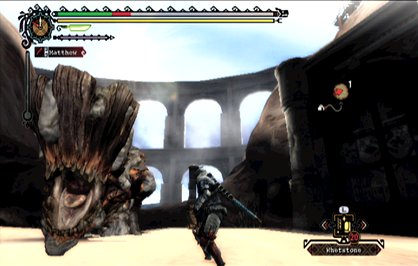
Barrelling across the plains, three mates at our side – one yelling “Hunters unite!” – is how online gaming should be. It’s how online gaming is on 360 and PS3, and couldn’t have come sooner. And that it isn’t meaningless, that online actions feed into a grander overall quest for goodies and trinkets, is the icing on the cake.
Monster Hunter DNA is fundamentally awkward and a little bit scary, but with good reason – it cherishes ability above all things. But in Tri, this awkwardness is as friendly as awkward gets. It’s now or never time, people: if the west is ever going to ‘get’ Monster Hunter, it’ll be on Wii. A single console carrying the western fate of the franchise? Ignore the palms: no sweat.
Apr 15, 2010
More info
| Genre | Action |
| Description | This Monster Hunter sequel is already out and extremely big in Japan, and so it's coming to the West, too. |
| Platform | "Wii" |
| US censor rating | "Teen" |
| UK censor rating | "Rating Pending" |
| Alternative names | "Monster Hunter 3" |
